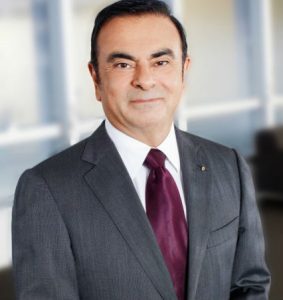Eighteen years ago, I stood on the stage on the eve of the Tokyo Motor Show presenting the Nissan Revival Plan. On its surface, the plan was about restructuring, efficiency, and cross-functional collaboration. But at its heart, it was a plan about giving people the tools to work on common ground, collaborate across cultures, and reform their company from the inside.

This is what Satya Nadella refers to as a “hit refresh” moment in his new book of the same name. It is about leading with purpose and creating a culture of empathy to transform the business.
We have had to “hit refresh” many times since that first speech at the Tokyo Motor Show, including bringing together Renault and Nissan in the early days of the Alliance; during the Lehman shock in 2008; after the 2011 Great Japan earthquake.
Each time, we have drawn from our strengths as a multicultural and global company to evolve and transform.
Another recent “hit refresh” moment came last year. In April 2016 it came to light that Mitsubishi Motors had an issue with its fuel efficiency reporting. As the scale of the problem became clear, the CEO of Mitsubishi Motors Osamu Masuko came to ask if Nissan could help the company with its revitalization.
Given Nissan’s own history, I could empathize. The Nissan revival was made possible only with the capital injection and management expertise from Renault. But as that experience taught me, building alliances isn’t easy. It would require a lot of energy and creativity. I had a decision to make. We could either walk away, or we could double down.
I considered the clear business case for Nissan, and the broader Alliance, as well. A deeper partnership with Mitsubishi Motors would help enhance the Alliance presence in the ASEAN region, and harness Mitsubishi’s proven capabilities in areas such as pick-up trucks.

At the Alliance level, we saw an opportunity to add Mitsubishi Motors to increase our scale by unit volume and increase our potential for synergies. Including leveraging the company’s expertise in plug-in hybrid EV technology.
So we chose to double down. Last fall, we announced Nissan’s acquisition of a 34 percent stake in Mitsubishi Motors. The deal made Nissan the company’s largest shareholder, and Mitsubishi Motors became the third company of what is now the Renault-Nissan-Mitsubishi Alliance.
Over the last year, we are seeing a great transformation. Today, the company is growing and customer trust is returning. In October, the company released its mid-term plan, “Drive for Growth,” which anticipates global sales to reach 1.3 million vehicles (+30%), and revenues to reach 2.5 trillion yen, by 2020.
The ongoing revitalization is making all three Alliance businesses together, stronger. In the first half of the fiscal year, the Alliance has become the largest automotive group in the world by unit sales, giving us scale as a competitive advantage. We’ve extended our leadership in electric vehicles, and announced ambitious targets, including plans to launch 40 models with autonomous drive capability and 12 pure electric models.
I couldn’t have imagined this outcome when I took the stage in Tokyo in 1999. But as Nadella writes, “…when people and cultures re-create and refresh, a renaissance can be the result.” The Renault-Nissan-Mitsubishi Alliance is multiple proof![]()
Carlos Ghosn, Chairman and CEO, Renault-Nissan Alliance
This post is part of the collection of #HitRefresh moments































